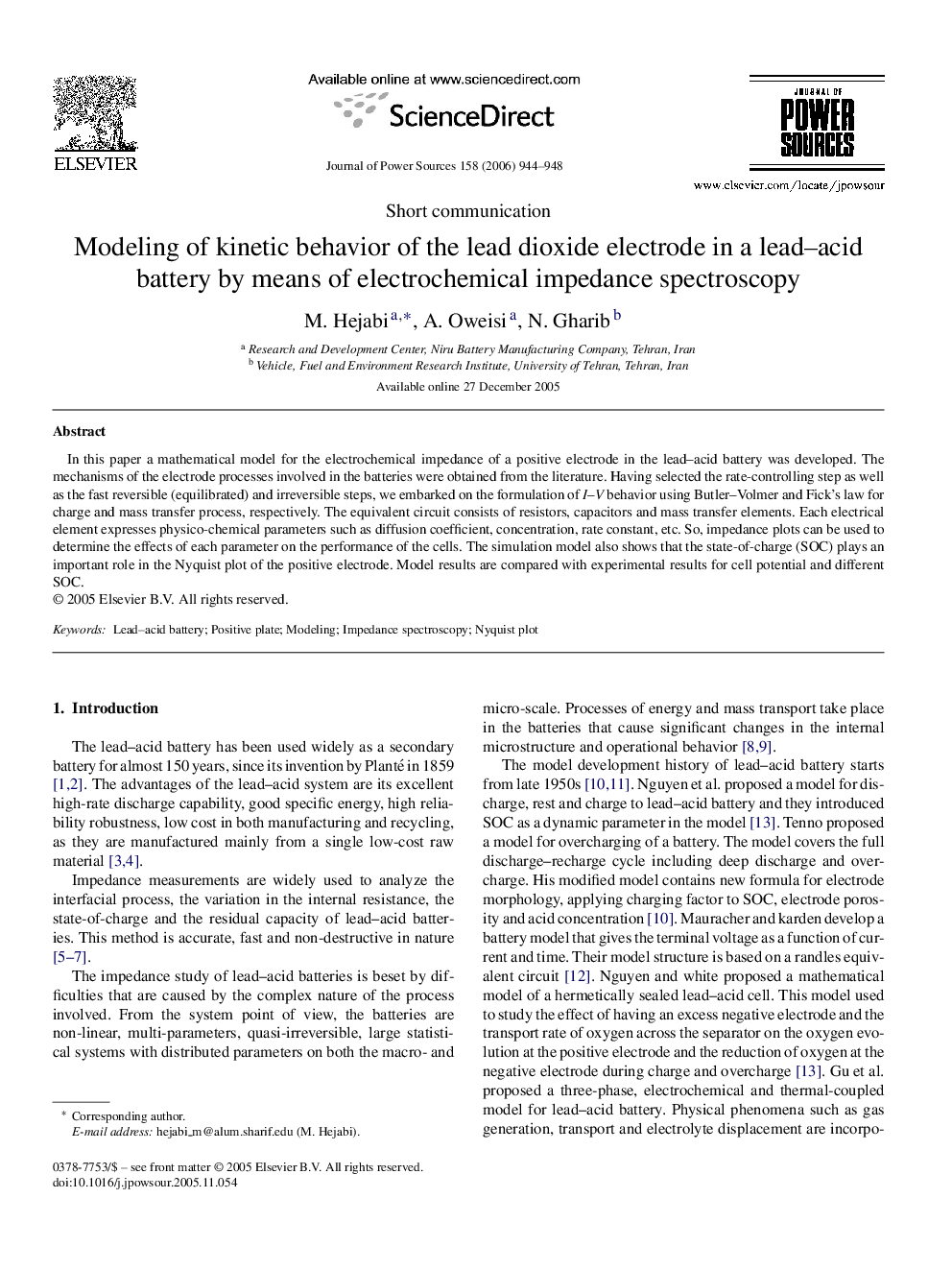| کد مقاله | کد نشریه | سال انتشار | مقاله انگلیسی | نسخه تمام متن |
|---|---|---|---|---|
| 1287355 | 973223 | 2006 | 5 صفحه PDF | دانلود رایگان |

In this paper a mathematical model for the electrochemical impedance of a positive electrode in the lead–acid battery was developed. The mechanisms of the electrode processes involved in the batteries were obtained from the literature. Having selected the rate-controlling step as well as the fast reversible (equilibrated) and irreversible steps, we embarked on the formulation of I–V behavior using Butler–Volmer and Fick's law for charge and mass transfer process, respectively. The equivalent circuit consists of resistors, capacitors and mass transfer elements. Each electrical element expresses physico-chemical parameters such as diffusion coefficient, concentration, rate constant, etc. So, impedance plots can be used to determine the effects of each parameter on the performance of the cells. The simulation model also shows that the state-of-charge (SOC) plays an important role in the Nyquist plot of the positive electrode. Model results are compared with experimental results for cell potential and different SOC.
Journal: Journal of Power Sources - Volume 158, Issue 2, 25 August 2006, Pages 944–948